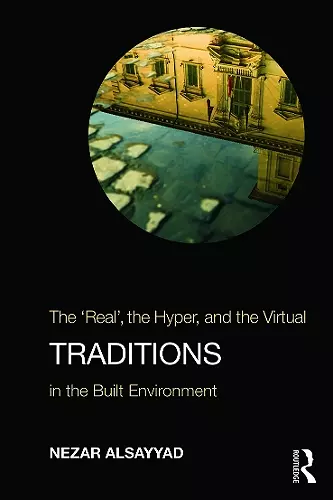Traditions
The “Real”, the Hyper, and the Virtual In the Built Environment
Format:Paperback
Publisher:Taylor & Francis Ltd
Published:17th Mar '14
Currently unavailable, and unfortunately no date known when it will be back
This paperback is available in another edition too:
- Hardback£180.00(9780415777728)

Traditions: The ‘Real’, the Hyper, and the Virtual in the Built Environment is a continuation of Nezar AlSayyad’s engagement with the subject of tradition in the built environment. In it he attempts to unsettle the belief that tradition is simply a product of history and transmission. Without dismissing the parallels between history and tradition, he argues that normative discourses which conceive of tradition as a place-based, temporally situated concept, as a static authoritative legacy of a past, and as a heritage owned by certain groups of people can no longer be sustained in the present moment of globalization. Instead he calls for an approach that recognizes how the main qualities of tradition are transient, fleeting, and contingent. While using the built environment as the primary lens of investigation, other approaches for the study of tradition, with origins in geography, history, sociology, or anthropology, are actively deployed in this book. AlSayyad offers a recasting of the epistemology of tradition as fundamentally spatial, thus providing a much-needed theoretical rudder for the emerging debates. Rather than analyzing tradition as a reaction to modernity or as its antithetical other, he examines those discursive and spatial terrains where tradition collides and colludes with modernity. AlSayyad argues that built traditional environments have been studied until recently as ‘authentic’ environments that represent ‘real’ everyday practices. But, as his research illustrates, their consumption at a mass scale, especially in the arena of tourism and mass media, has often elevated them to hyper-environments whose connection to ‘real’ places results in fundamentally ‘dis-placed’ and disembodied experience. More recently, the portrayal of traditional environments in both the virtual realm and heritage discourses has resulted in new articulations of tradition that could not be imagined just a few decades ago. AlSayyad interrogates the meanings and practices of tradition in the twenty-first century by looking at these three distinct categories of the built environment: the ‘real’, the hyper, and the virtual.
How to navigate the tangled discourses and practices that we name ‘tradition’? Given the variations across times and cultures, the differences among disciplines and professions, the contradictions among theories, and unprecedented changes due to globalization, there may seem little hope. But, at just the right time, Nezar AlSayyad’s book, Traditions: The ‘Real’, the Hyper, and the Virtual in the Built Environment, has appeared. The depth and subtlety that results from his decades-long study of traditional dwellings and settlements is matched by a freshness that also does justice to new phenomena such as hyper and virtual environments. We could not do better than letting him orient us, trusting him as a guide through this troubled but increasingly important territory. - Robert Mugerauer, Professor and Dean Emeritus , College of Built Environments, University of Washington
"AlSayyad combines a literature review with considered questions about the terminology used to define architectural traditions. He defines the ways that standard practices are influenced by internal and external forces, such as colonialism, environmental change, or economic factors, and traces the ways that tradition is redefined and cultural identity evolves. Complex and erudite, this book is best suited for upper-level readers. It is well indexed and quite viable as a reference source. An excellent addition to programs or libraries specializing in urban planning, anthropology, architecture, or history. Summing Up: Recommended. Upper-level undergraduates and above." – L. R. Hudgins, independent scholar, CHOICEReviews, December 2014
ISBN: 9780415777735
Dimensions: unknown
Weight: 416g
236 pages